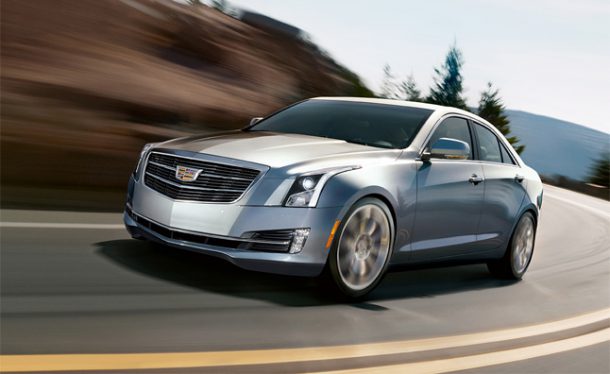Faster Four: GM Patents a Better Two-Stage Turbocharger

General Motors wants better performance from its boosted engines, so it headed to the patent office with a design for a new two-stage turbocharger — one that eliminates the drawbacks of the existing setup.
According to a document published by GM Inside News, the General filed the patent on May 19. The design (mated to a four-cylinder engine) isolates the low-pressure and high-pressure turbines, calling on one or the other (but not both) at different engine speeds and loads.
In a conventional two-stage setup, both turbines operate simultaneously at low to mid engine speeds, with only the low-pressure turbine working at high engine speeds. The two sides are never fully isolated, which compromises low-end performance.
Like a parent dealing with squabbling kids, GM decided to separate the two. In its design, the high-pressure turbo connects to the exhaust manifold via a high-pressure inlet duct, with the low-pressure unit connected to that channel via a low-pressure inlet duct. Depending on engine speed, an ECU-guided actuator located in the exhaust manifold opens opens the high-pressure inlet duct while closing off connecting channel, or vice versa.
The design aims to lower pumping losses while boosting the efficiency of both turbines. According to the patent, “maximum available enthalpy is given to the LP stage (low pressure turbine) in full power operation and to the HP stage (high pressure turbine) in maximum torque operation.”
Expect to see the turbo lag-reducing technology added to GM’s four-cylinder engines in the future, with the high-output 2.0-liter being a likely starting candidate.
[Image: General Motors]

More by Steph Willems
Latest Car Reviews
Read moreLatest Product Reviews
Read moreRecent Comments
- ToolGuy This thing here is interesting.For example, I can select "Historical" and "EV stock" and "Cars" and "USA" and see how many BEVs and PHEVs were on U.S. roads from 2010 to 2023."EV stock share" is also interesting. Or perhaps you prefer "EV sales share".If you are in the U.S., whatever you do, do not select "World" in the 'Region' dropdown. It might blow your small insular mind. 😉
- ToolGuy This podcast was pretty interesting. I listened to it this morning, and now I am commenting. Listened to the podcast, now commenting on the podcast. See how this works? LOL.
- VoGhost If you want this to succeed, enlarge the battery and make the vehicle in Spartanburg so you buyers get the $7,500 discount.
- Jeff Look at the the 65 and 66 Pontiacs some of the most beautiful and well made Pontiacs. 66 Olds Toronado and 67 Cadillac Eldorado were beautiful as well. Mercury had some really nice looking cars during the 60s as well. The 69 thru 72 Grand Prix were nice along with the first generation of Monte Carlo 70 thru 72. Midsize GM cars were nice as well.The 69s were still good but the cheapening started in 68. Even the 70s GMs were good but fit and finish took a dive especially the interiors with more plastics and more shared interiors.
- Proud2BUnion I typically recommend that no matter what make or model you purchase used, just assure that is HAS a prior salvage/rebuilt title. Best "Bang for your buck"!



































Comments
Join the conversation
I for one do NOT welcome our new four cylinder overlords. (at least not in "performance" vehicles)
Seems like a similar setup to what Mazda is doing in the new CX-9 2.5T. Not being an engineer, not sure what the distinctions are.